Overview
We delve into the essential strategies for effective payer-provider integration in healthcare. Successful integration is not just beneficial; it is transformative, enhancing patient outcomes and operational efficiency.
By leveraging technology, fostering collaboration, and addressing social determinants of health, we can create a robust healthcare ecosystem.
This article showcases various case studies and expert insights, illustrating how these strategies can drive meaningful change in our industry.
Introduction
In today’s rapidly evolving healthcare landscape, technology integration is not just a luxury; it is a necessity for enhancing collaboration between payers and providers. We at Avato recognize that our Hybrid Integration Platform is at the forefront of this transformation, delivering a secure and efficient solution that bridges the gaps between diverse healthcare systems.
By tackling the complexities of legacy systems and promoting seamless data sharing, we empower healthcare organizations to elevate patient care and operational efficiency. As the industry shifts towards value-based care and real-time data sharing, harnessing integrated technology becomes paramount.
What challenges is your organization facing in this transition? This article explores the critical role we play in facilitating these integrations, highlighting our impact on improving patient outcomes, fostering collaboration, and navigating the complexities of modern healthcare.
Avato: Secure Hybrid Integration Platform for Payer-Provider Collaboration
We have meticulously crafted our hybrid integration platform to securely connect diverse medical systems, fostering seamless payer provider integration and collaboration. By effectively addressing the challenges presented by legacy systems, we enhance data sharing and communication, which are critical for improving patient care and operational efficiency. Our platform’s advanced security features safeguard sensitive health information, thereby building trust among stakeholders within the healthcare ecosystem.
Our focus is on maximizing and extending the value of legacy systems, simplifying intricate connections, and significantly lowering expenses. Key features of our Hybrid Integration Platform include real-time monitoring and notifications on system performance, which are crucial for ensuring operational continuity. Recent trends indicate a significant shift towards cloud-based health IT solutions, with approximately 70% of hospitals and clinics in the USA adopting these technologies. This transition is fueling the demand for hybrid connection platforms, as organizations seek to enhance the quality of care through real-time digital health capabilities. In the Asia Pacific area, the swift embrace of medical IT solutions in nations such as China and India is anticipated to further enhance market growth, positioning us as a key participant in this changing environment.
Our dedication to guaranteeing round-the-clock availability for essential connections is crucial in facilitating payer provider integration. By facilitating efficient data exchange, we not only tackle the complexities of integration but also enable healthcare organizations to react quickly to changing demands. This capability is essential for maintaining operational continuity and enhancing the overall quality of care delivered to patients. As our customer Gustavo Estrada noted, “Avato has the ability to simplify complex projects and deliver results within desired time frames and budget constraints.” For stakeholders aiming to stay updated on medical data trends, we encourage subscribing to our Vitals webinar series or Data Bytes newsletter for valuable insights.
Clinical and Claims Data Integration: Enhancing Patient Outcomes
Payer provider integration enables us to integrate clinical and claims data, empowering us to achieve a comprehensive understanding of individual health. This holistic approach not only enhances the monitoring of outcomes but also facilitates payer provider integration for more effective treatment plans.
By leveraging Avato’s Hybrid Integration Platform, we optimize data flows, ensuring that critical information is readily available in real-time, supported by real-time monitoring and alerts on system performance. This capability is crucial for prompt interventions, ultimately resulting in enhanced care for individuals, and recent trends indicate that effective payer provider integration among healthcare systems significantly boosts health outcomes.
Our case study titled ‘Understanding Interoperability in Healthcare’ emphasizes that payer provider integration is vital for improving health outcomes, facilitating timely access to comprehensive individual information, and enhancing both personal and community health results.
Healthcare professionals emphasize that payer provider integration and access to complete and timely patient information are crucial for improving outcomes. As Gustavo Estrada from BC Provincial Health Services Authority noted, ‘This entity has the ability to simplify complex projects and deliver results within desired time frames and budget constraints.’
With support for 12 levels of interface maturity, our platform not only simplifies complex integrations but also maximizes the value of legacy systems, enabling organizations to unlock data and systems in weeks, not months. This efficiency reinforces the critical role of payer provider integration in enhancing modern healthcare practices.
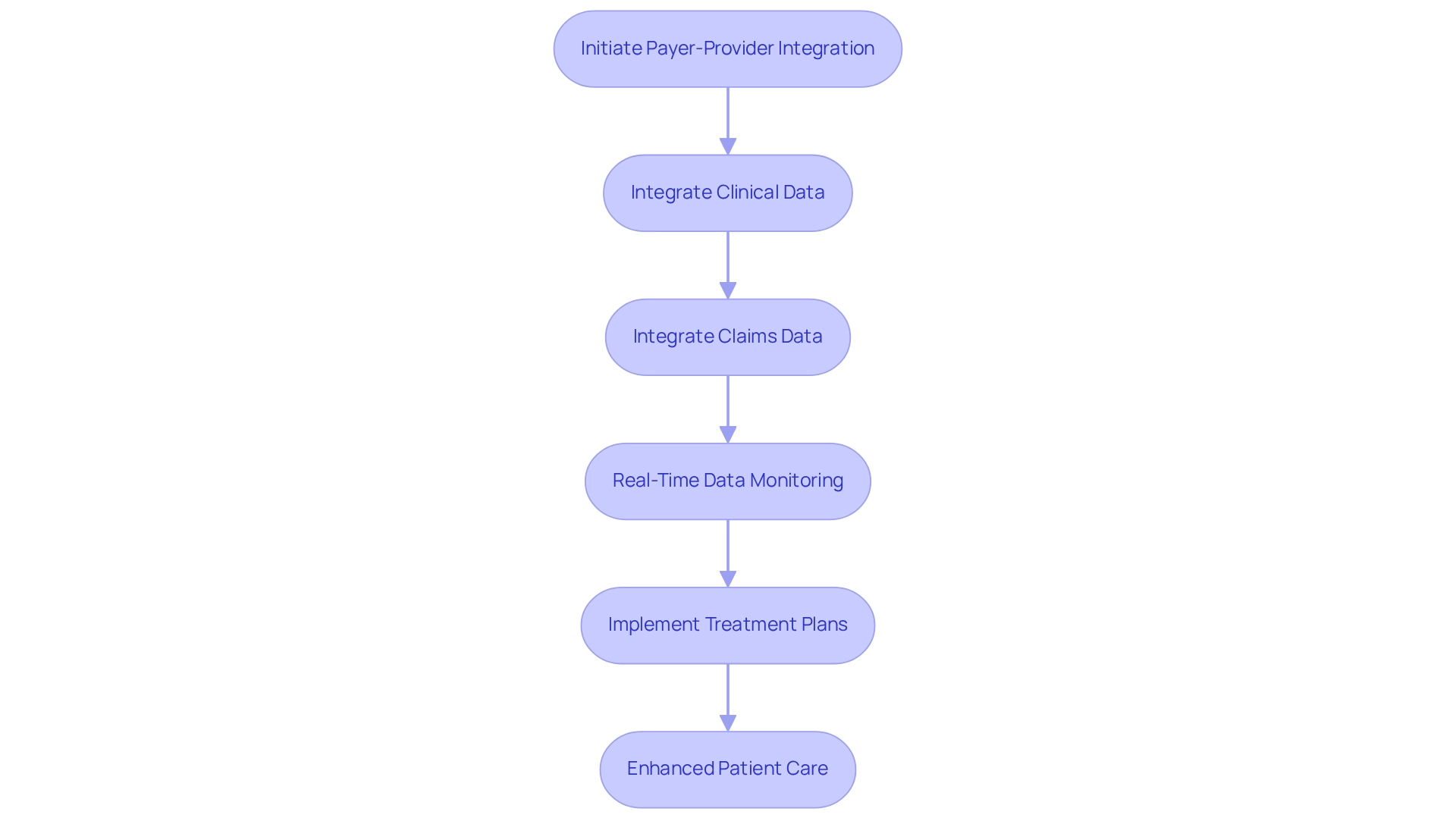
Address Social Determinants of Health: Strengthening Payer-Provider Partnerships
To effectively tackle social determinants of health, we recognize that payer provider integration is essential for close collaboration between payers and providers. By leveraging shared data and insights, we can pinpoint and address the myriad factors influencing patient health beyond traditional clinical environments. For instance, programs aimed at improving housing stability have demonstrated tangible benefits, leading to fewer emergency department visits and shorter hospital stays. This illustrates the significant impact of addressing social determinants. Our secure Hybrid Connection Platform plays a pivotal role in this collaboration, enabling the maximization and extension of legacy systems while simplifying complex connections. This capability significantly reduces costs, enhances access to care for underserved populations, and provides real-time monitoring and alerts on system performance, ensuring that stakeholders can respond promptly to emerging needs.
Effective payer-provider integration is progressively acknowledged for its capacity to enhance health outcomes, as evidenced by medical systems investing in housing solutions to assist vulnerable populations. As Pia Dean, Chair of the Board of Directors of Denver Health, notes, “I see in this generation that is coming, a group that says: ‘I will not be satisfied until I can write a prescription for food and a prescription for housing.’” This underscores the urgency of addressing social determinants of health through collaboration.
Moreover, we cannot overstate the importance of data sharing. Statistics indicate that payer provider integration is crucial for effective data exchange, which helps in identifying at-risk populations and tailoring interventions accordingly. As medical leaders emphasize the necessity of cooperation for individual well-being, the unification of systems through our platform becomes critical in promoting these alliances and ultimately improving person-centered care. By supporting these investments through robust data sharing and integration, we reinforce our value proposition in the healthcare landscape.
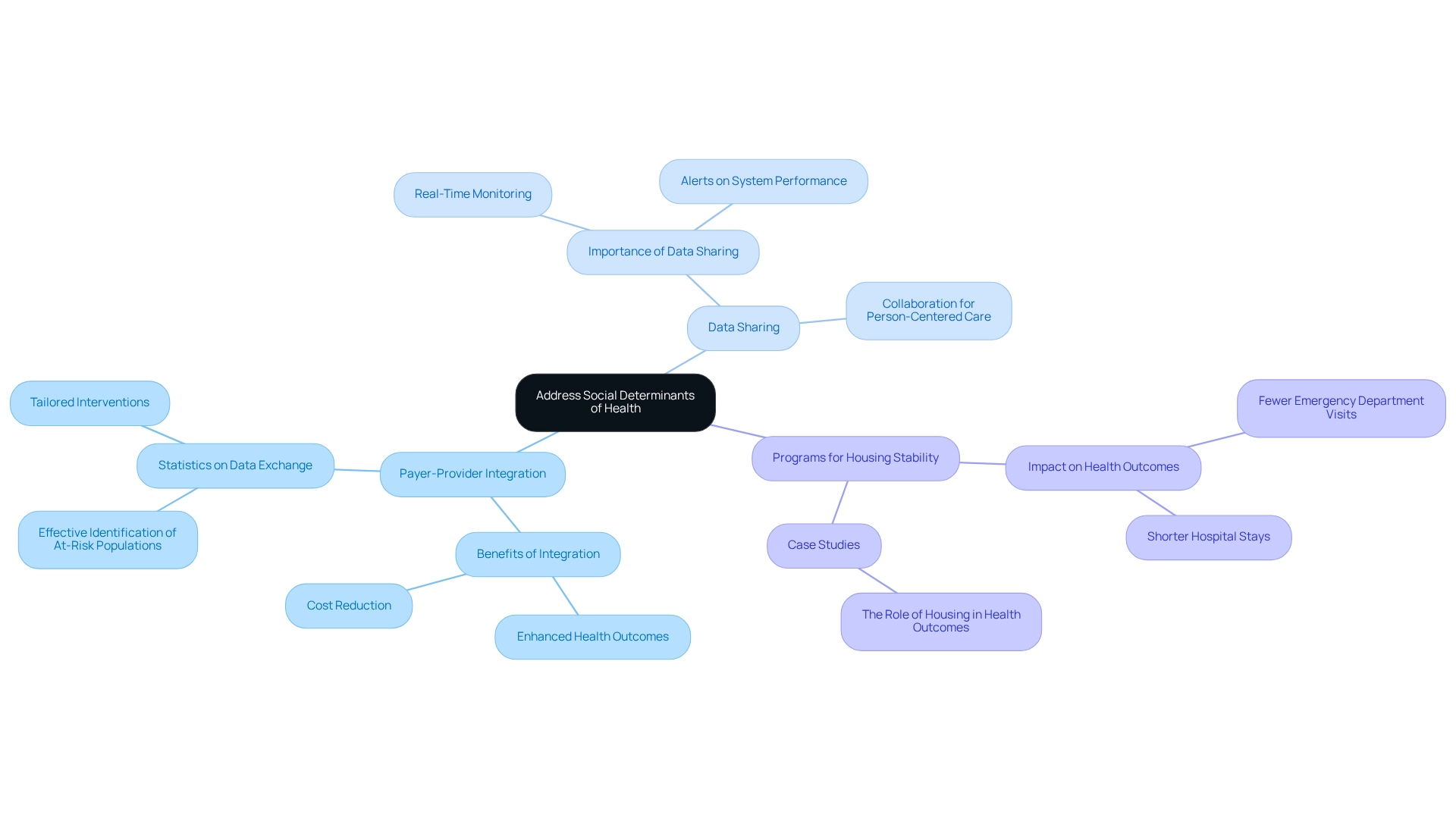
Adopt Value-Based Care Models: Aligning Incentives for Better Outcomes
Embracing value-based care models necessitates a fundamental shift in the strategies we and our partners adopt towards individual care. By aligning our incentives, we can focus on delivering high-quality care that significantly enhances patient outcomes. We play a crucial role in this transition by equipping stakeholders with essential tools for effective data sharing and performance tracking through our secure Hybrid Integration Platform. This platform maximizes and extends the value of legacy systems, simplifies complex integrations, and provides real-time monitoring and alerts on system performance. Such capabilities enable the assessment of success against common goals, fostering a collaborative atmosphere that emphasizes well-being.
The influence of value-based care is underscored by case studies like the Panoramic Health Value-Based Kidney Care Model, which has demonstrated significant enhancements in outcomes. This model has achieved an average savings of $872 per patient per month and a remarkable 56% reduction in hospital readmissions, showcasing the effectiveness of aligning incentives between payers and providers. Our integration platform supports similar initiatives by facilitating payer provider integration, seamless data exchange, and performance monitoring, ensuring that organizations in the medical field can efficiently and effectively replicate these successes.
As we approach 2025, the medical landscape continues to evolve, with a growing emphasis on incentivizing providers to enhance care quality. Industry leaders, including Chris Schmaltz, Chief Value-Based Care Officer, stress that aligning incentives not only enhances outcomes for individuals but also lowers overall medical expenses, creating a win-win for all parties involved. Our integration platform is crucial in supporting these initiatives, ensuring that medical organizations can navigate this complex landscape effectively while unlocking isolated assets and enhancing business value.
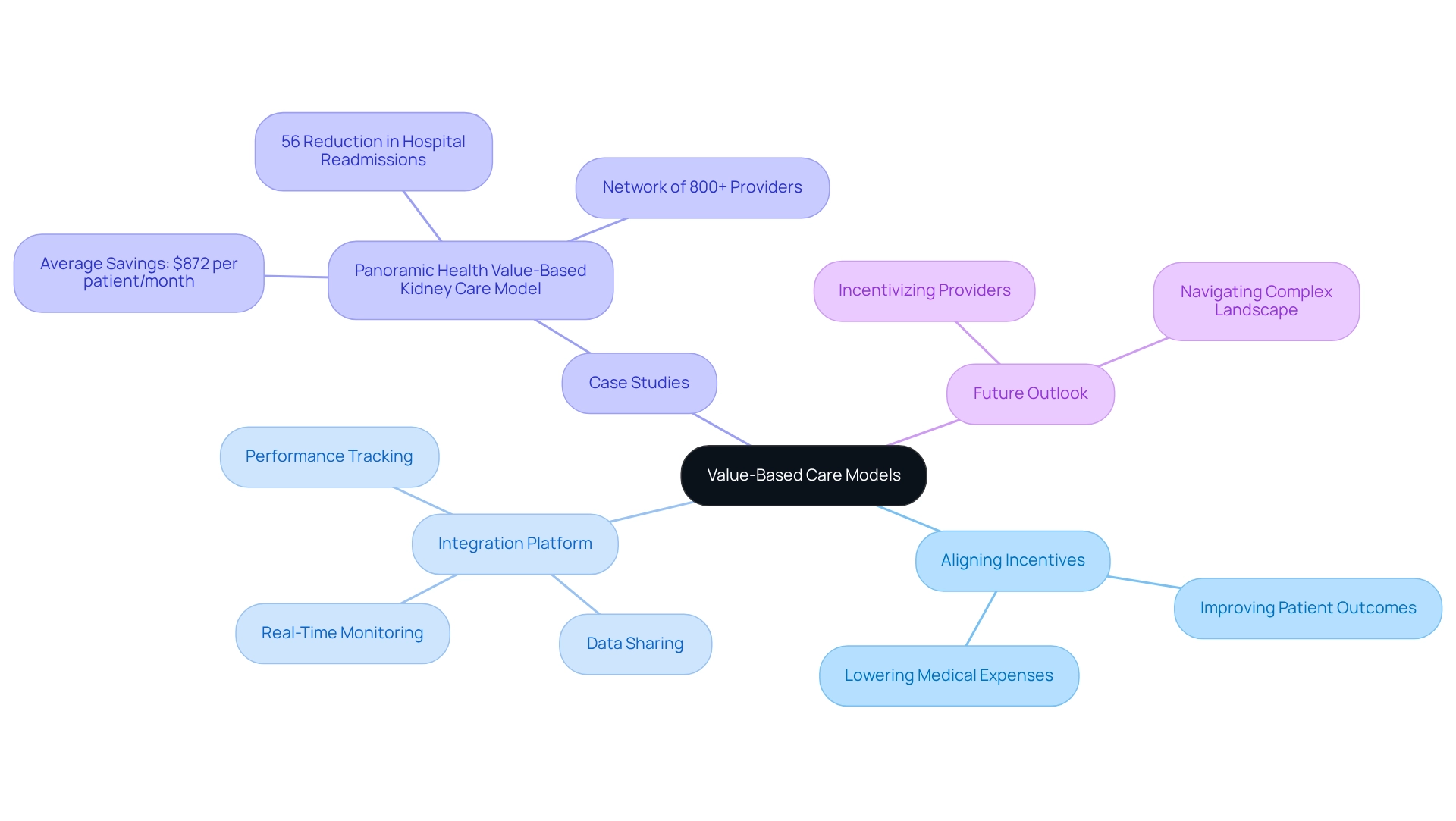
Leverage Technology for Real-Time Data Sharing: Improving Communication
Utilizing technology for real-time data sharing significantly enhances payer provider integration and communication. We recognize that Avato’s Secure Hybrid Integration Platform enables prompt access to vital information, empowering healthcare professionals to make informed decisions quickly. This rapid access not only streamlines care coordination but also minimizes the risk of errors, ensuring patients receive timely and appropriate care.
As we move towards 2025, the emphasis on improving communication through technology is underscored by expert opinions advocating for value-based care, which highlights the critical role of effective doctor-patient communication in determining care quality. Dr. Simon Lorenz emphasizes that effective communication is essential for delivering quality care, reinforcing our need for robust integration solutions.
Furthermore, statistics indicate that simple, low-cost measures can lead to substantial improvements in health outcomes, as seen with Dexcom’s recent FDA clearance for its G7 15-day glucose monitoring system, showcasing advancements in healthcare technology. By utilizing the platform’s features, such as real-time observation and notifications regarding system performance, we can improve decision-making speed and overall operational efficiency, ultimately resulting in enhanced care for individuals.
The case study titled ‘Avato’s Unique Value Proposition’ illustrates how we deliver unmatched value through speed, security, and simplicity in integration, directly linking it to the benefits of real-time data sharing. Furthermore, as Steven Keating powerfully expresses, ‘How come as a recipient of care, we’re always last in line to the data?’ This underscores the ongoing difficulties in access to medical data, further stressing the significance of incorporating real-time data sharing into medical practices.
By concentrating on API-driven connections and vendor assistance, we position ourselves as leaders in payer provider integration, which improves communication between payers and providers, maximizes the value of legacy systems, and simplifies intricate connections.
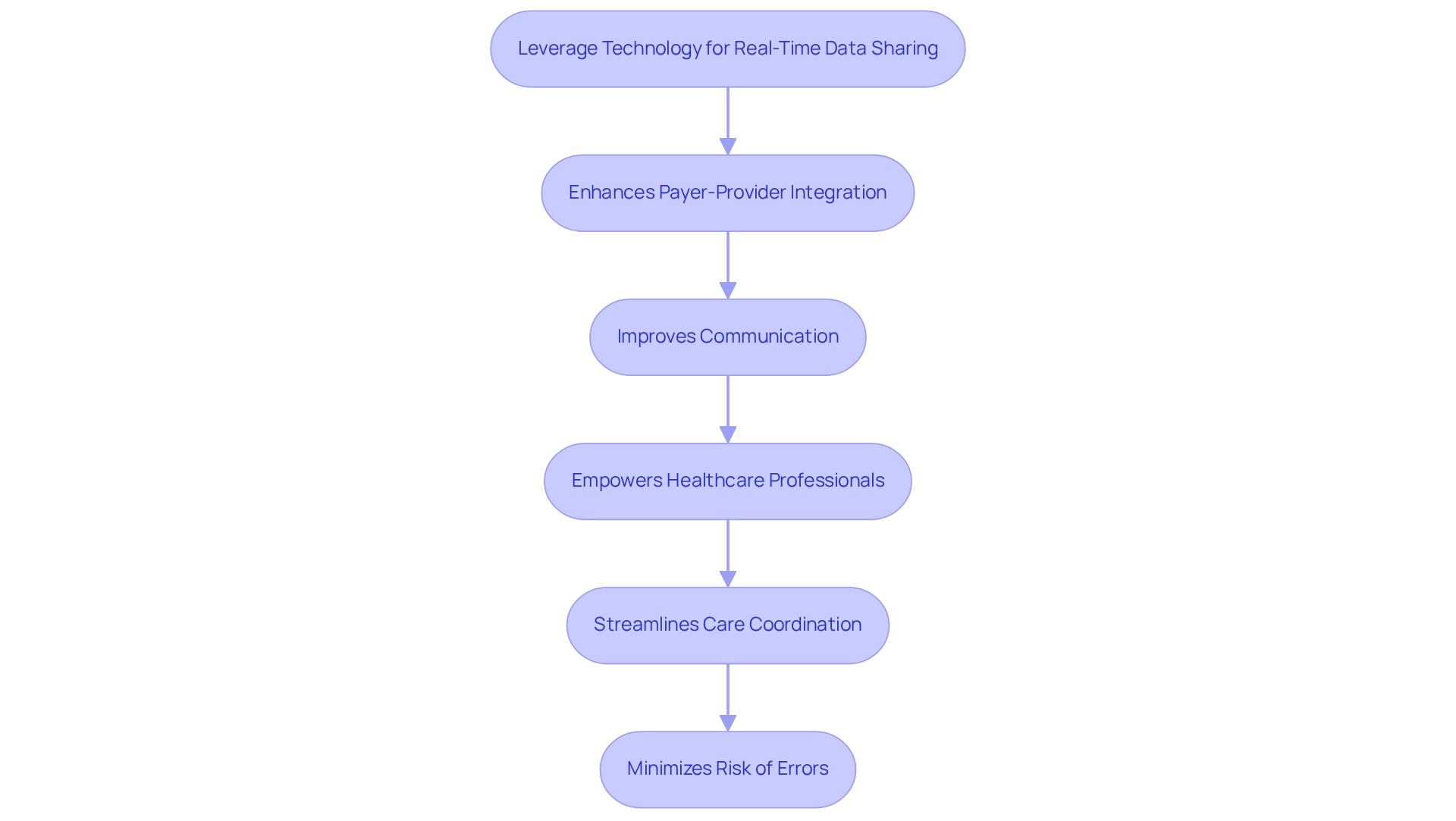
Establish Collaborative Care Teams: Enhancing Coordination and Patient Experience
Forming collaborative care teams is essential for improving care coordination by bringing together various healthcare professionals. Our secure hybrid integration platform facilitates payer provider integration, playing a crucial role in enabling smooth communication and data sharing among team members, ensuring that all stakeholders involved in an individual’s care have access to consistent and current information. This collaborative method not only enhances experiences for individuals but also significantly boosts health results by addressing the comprehensive requirements of individuals.
Statistics show that effective collaboration in the medical field can lead to enhanced patient satisfaction and care quality. For example, a study involving over 30,000 cockpit crew members and 1,033 operating room personnel demonstrated that improved communication among team members directly relates to better performance and results in high-stakes environments, which is similarly relevant to medical settings. Furthermore, expert insights emphasize that standardized communication tools are instrumental in bridging gaps in communication styles, thereby fostering a more cohesive team environment. Michael Leonard, Physician Coordinator of Clinical Informatics at Kaiser Permanente, notes, “Standardized communication tools are very effective in bridging this difference in communication styles.”
Recent advancements in medical services underscore the growing recognition of collaborative care teams. As organizations execute strategies to enhance team communication, they report improved care and satisfaction. For instance, case studies demonstrate that medical professionals who implement organized communication strategies, such as regular interdisciplinary meetings and shared digital platforms, can manage intricate client needs more effectively, ultimately resulting in a more favorable client experience. By utilizing our payer provider integration features, which encompass secure management of intricate systems and real-time monitoring and notifications, we can create strong collaborative care teams that not only optimize operations but also enhance the quality of service provided to individuals. To execute these strategies efficiently, service providers can leverage our platform’s features to ensure payer provider integration, guaranteeing steady communication and data access, thus improving coordination and outcomes for individuals. Our commitment to streamlining diverse systems further bolsters these initiatives, allowing medical teams to concentrate on providing outstanding care for individuals.
Develop Clear Communication Strategies: Ensuring Alignment on Goals
Establishing clear communication strategies is vital for aligning the objectives of payer provider integration. What if we could ensure that both parties share a unified vision regarding patient care goals? By implementing regular communication channels and protocols, we can significantly reduce misunderstandings and foster collaboration—an essential aspect of navigating the complex healthcare landscape.
Our Hybrid Integration Platform enhances these strategies by providing robust tools for seamless communication and data sharing, enabling stakeholders to collaborate more efficiently. With the capability to optimize and enhance the value of legacy systems, this solution simplifies intricate connections and greatly lowers expenses, guaranteeing round-the-clock availability for essential linkages.
Furthermore, the platform offers real-time monitoring and alerts, reinforcing its reliability in supporting these communication efforts. While multidisciplinary care plans are crucial for improving communication processes between hospitals and primary care settings, we recognize that organizations often encounter barriers to their effective implementation.
By prioritizing clear communication and utilizing dedicated solutions, we can better align our goals through payer provider integration, ultimately leading to enhanced patient care outcomes. Our commitment to addressing connectivity challenges illustrates our dedication to designing technological frameworks that enhance rich, interconnected customer experiences.
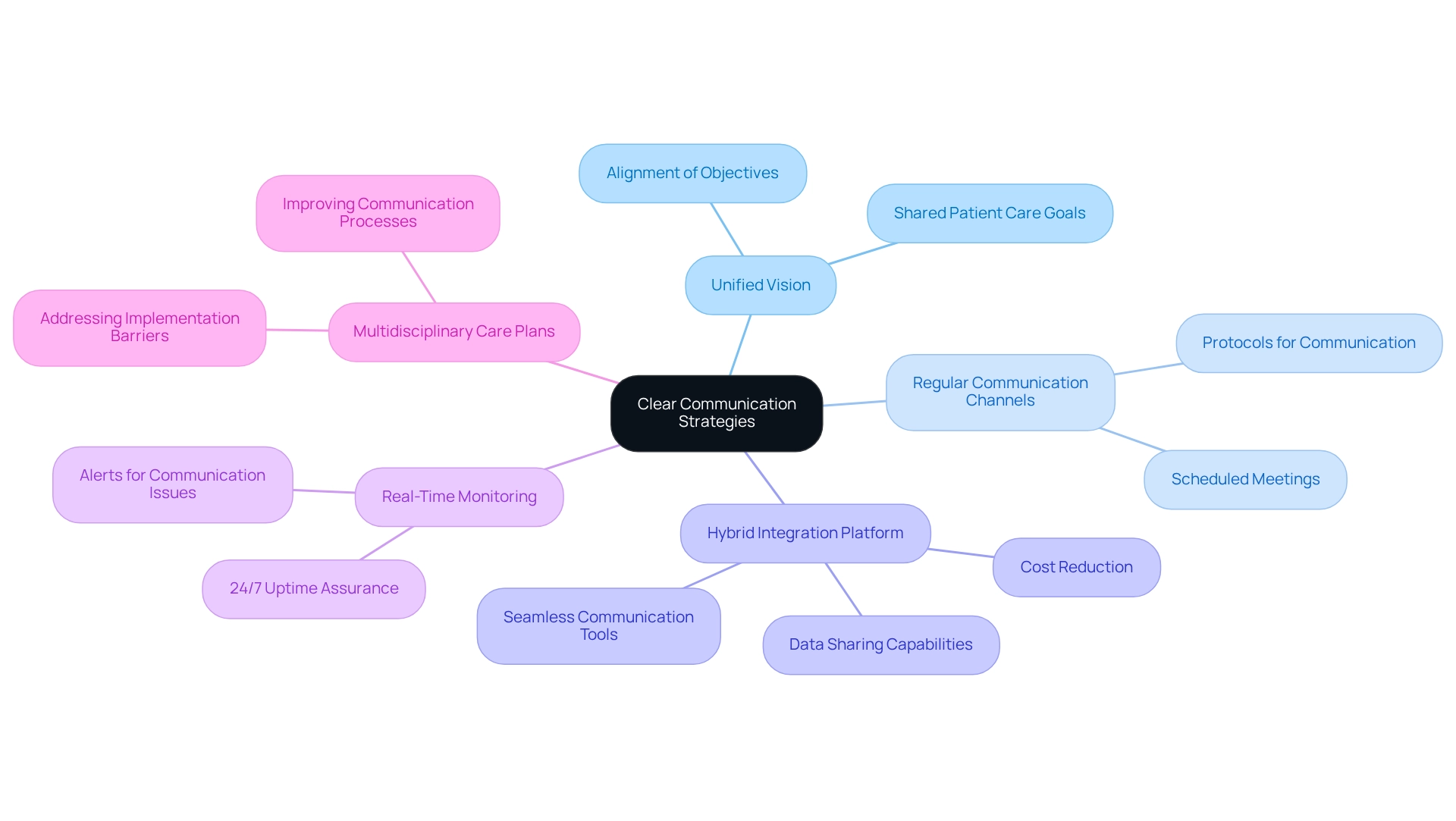
Invest in Training and Education: Facilitating Smooth Integration Transitions
Investing in training and education is not just beneficial; it is essential for ensuring smooth transitions during amalgamation processes. By equipping our staff with the necessary skills and knowledge, we can maximize the effectiveness of new technologies. At Avato, we provide comprehensive resources and support for training initiatives, fostering a culture of continuous learning and adaptation within healthcare organizations. This commitment is especially vital as the demand for strong unification solutions expands, propelled by trends like telehealth and remote monitoring.
Organizations that prioritize staff training not only enhance their operational capabilities but also improve patient care outcomes, positioning themselves for success in a rapidly evolving landscape. Statistics indicate that organizations with effective training programs experience a 30% increase in technology integration success rates, leading to improved performance and reduced downtime. By backing personnel training programs, we enable medical organizations to navigate the complexities of technology adoption with confidence.
Furthermore, the case study titled ‘Healthcare Integration and Telehealth Trends’ illustrates how organizations that adapt to these trends can enhance accessibility and ensure comprehensive care for patients, reinforcing the critical role of training in this process. The hybrid unification platform, supported by our committed group of specialists, plays a crucial role in streamlining various systems and boosting business value, ultimately transforming medical service delivery.
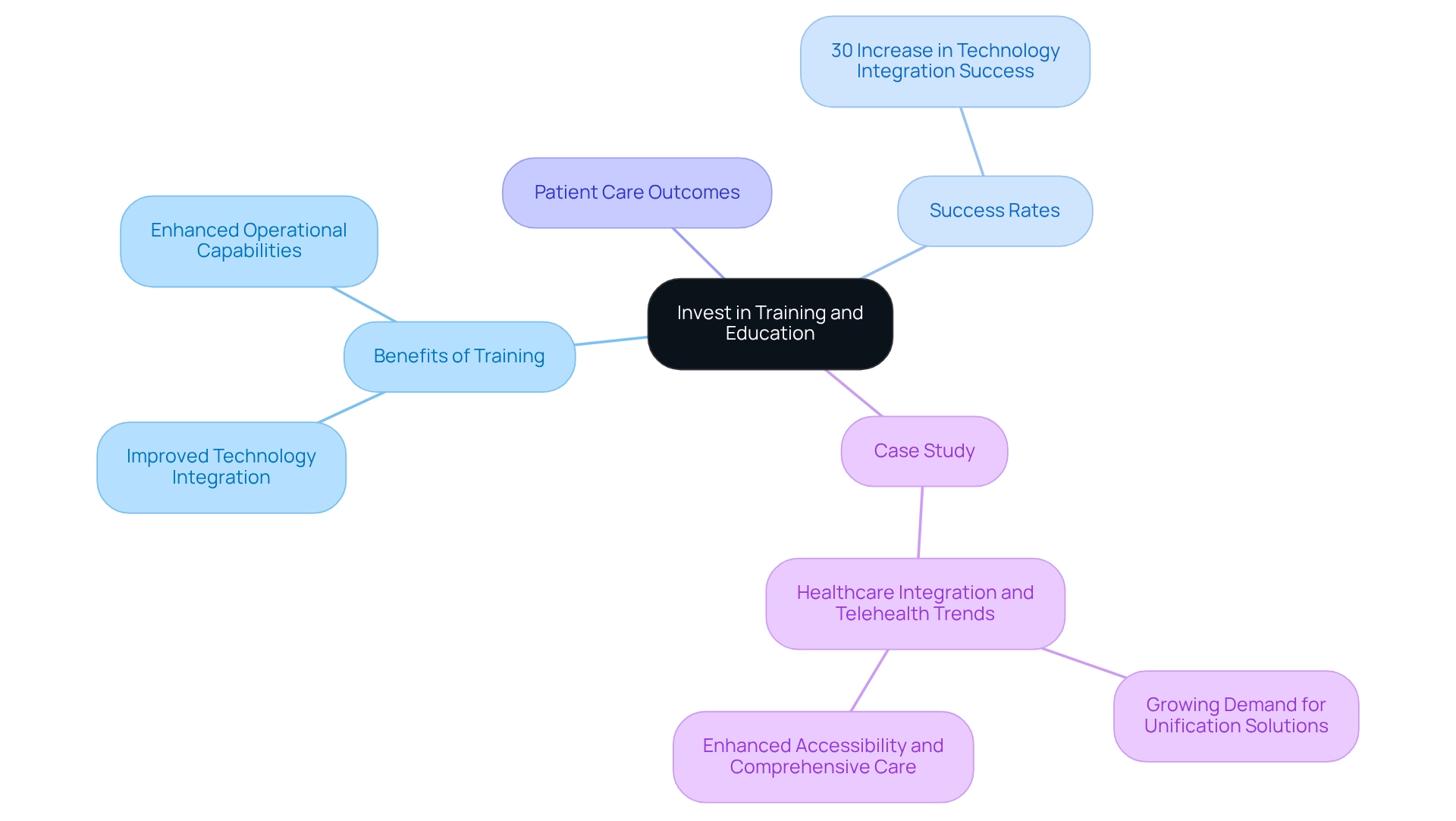
Monitor and Evaluate Integration Efforts: Using KPIs for Continuous Improvement
Supervising and assessing collaborative efforts through key performance indicators (KPIs) is essential for fostering continuous improvement in medical environments. By regularly evaluating against established metrics, we can identify areas that require enhancement and make data-driven decisions for our future strategies. Our Hybrid Connectivity Platform offers advanced analytics tools, including real-time monitoring and notifications on system performance, enabling us to efficiently track progress and results, ensuring that our efforts align with organizational objectives and enhance the value of legacy systems.
The importance of KPIs in medical system coordination cannot be overstated. They serve as a vital mechanism for measuring success. For example, automated data collection for KPIs, powered by Avato’s technology stack, streamlines compliance tracking and reporting, which is particularly advantageous in the highly regulated healthcare environment. This capability not only simplifies complex connections but also significantly reduces costs associated with manual processes.
Expert opinions underscore that well-designed KPIs provide meaningful insights that enhance the quality and safety of services delivered. As Dominic J. DiCostanzo notes, “The goal of well-designed KPIs is to provide meaningful information that can be used to monitor and improve the quality and safety of the services provided.” Continuous monitoring of these indicators assists us in evaluating performance and facilitates ongoing enhancements. Successful case studies, such as ClearPoint Strategy’s role in KPI management within the medical sector, illustrate how effective KPI tools, combined with payer provider integration, empower organizations to navigate challenges and improve overall performance, further enhanced by Avato’s capabilities.
Statistics reveal that follow-up rates are a crucial KPI, indicating the success of our coordination efforts in ensuring individuals receive necessary care after their visit. By leveraging Avato’s platform, we can significantly enhance our integration strategies and track these follow-up rates, ultimately leading to better patient outcomes and operational efficiencies.
Conclusion
Integrating technology in healthcare is not just beneficial; it is essential for enhancing collaboration between payers and providers. Our Hybrid Integration Platform is pivotal in this transformation, effectively addressing the challenges posed by legacy systems and enabling efficient data sharing. This platform guarantees real-time access to critical patient information, which not only boosts operational efficiency but also improves patient care through timely interventions.
The integration of clinical and claims data is crucial, empowering healthcare organizations to develop comprehensive treatment plans that enhance patient outcomes. Furthermore, strong payer-provider partnerships are vital for addressing social determinants of health, ultimately leading to improved outcomes for underserved populations. We are committed to supporting the transition towards value-based care models that prioritize quality and align incentives for better patient results.
Investing in training and education is paramount for maximizing the effectiveness of new technologies and ensuring that healthcare professionals are equipped to navigate integration complexities. By monitoring integration efforts through key performance indicators, we help organizations achieve continuous improvement and adapt to the ever-evolving healthcare landscape.
In conclusion, our Hybrid Integration Platform is instrumental in bridging the gaps between diverse healthcare systems, driving better patient outcomes and operational efficiencies. Embracing integrated technology is crucial for unlocking the full potential of healthcare delivery, preparing organizations to thrive in a value-driven ecosystem focused on collaboration, communication, and patient-centered care.

